Tui - the plant is unpretentious, can grow on any soils and in different climates. The name of this plant is unusual, translated from the Greek word "Thuja" means offering (burning) sacrificing. So, if you cut the bucks of the thuly and pour them, then a pleasant fragrance spreads when combustion. By the way, if we compare with other plants of coniferous rocks, then you can immediately find one difference - the Tui has no needles, like a fir or pine. Instead of needles at the plant, flat scales, which are very close to each other. In vivo in our country, Tuya is not growing. She came to us from the distant countries of America and Asia, but since the plant is unpretentious, it is quite possible to grow it yourself in our climate.
Tuya is a shrub that does not lose color for a whole year, regardless of weather conditions. Refers to the family of cypressov, the genus "vote". It is distinguished by a tree by what can delight her beauty hundreds and even thousands of years in a row.
Plant species
Currently, in nature, as well as grown by artificially, more than 120 types of plants can be found. Each of them has its own feature - Thu may differ not only to the color of coniferous scales, but also the type of crown.
By the way, it is possible to plant the Tui tree anywhere, even in its garden, the plant is unpretentious or in landing or in care. But this does not mean that you can forget about a beautiful shrub and do not take care at all.
It grows in a thuja on any soil and, depending on the selected place for the landing, shows itself in different ways: can strive up or on the contrary, to sit for a long time in one place.
If the soil is fertile and well moistened, then the thuja will develop faster. Provided that there is no draft and strong wind on this site. The plant moves well trimming, it is a huge plus, as you can form a crown of a tree as you consider it necessary. If there is little space on the plot, then the thuja with competent trimming will strive upwards, and if there is enough space, it will also be launched.
So that the thua looks attractive and extra branches did not interfere with the growth of the plant, it is customary to cut this village, giving him the shape of a pyramid or spiral, but you can make any form from the usual thuly: a ball, oval or columns.
In parks and nurseries you can meet only 5 main types of Tui, this is a giant thuja, as well as Japanese, Western, Korean and East. The popular view of the evergreen plants is Western Thuja. It is suitable for cultivation in all conditions, as it is well tolerates the differences in temperature and frost, unpretentious in care. You can give the plant desired form. By the way, the breeders over the past few decades have managed to take out many varieties and forms of Western Tui, which is well caring in countries with a harsh climate. The average life expectancy of the plant is 1000 years. Amateur gardeners are popular with such types of Tui: dwarf, molding, miniature. Western Tuya does not withstand drought (can not be grown in the south and north). Strong drought and heat, as well as on the contrary, frost and winds negatively affect the cultivation of this type of thuu.
The folded thuja looks gorgeous in the garden, but it does not differ endurance, as it quickly freezes and takes a bad winter. New shoots are frozen during the winter, but with the onset of heat, and gradually restores. The plant is tall, the length is pulled up to 60 (!) Meters, the diameter of the trunk of an adult plant - 2 m. Crown makes a very pleasant fragrance (many people consider it specific and because of this feature dislike this type of thuly.
Eastern beauty has a sprig in the form of a fan, but to grow it in a harsh climate and it does not work with cold winters, the plant quickly freezes. Even in the homeland, to grow so much of this variety, it is necessary to protect the plant from bad weather. Refreshing air in a radius of several meters, and also kills bacteria.
Japanese Thuja - come from Japan. Grows in mountainous areas or in mixed forests. If the conditions for growth are favorable (height above sea level in the range of 1800 m), then the thuja can achieve in growth up to 20 m in height. By the way, this type of plant is not afraid of cold weather and costs without moisture (within the limits permissible). The Japanese Tui has a very sharp aroma, resembling the smell of firing resin. The plant has a soft chew and externally very attractive: the top of the Tui is bright green, and the lower part - with light areas. From afar it seems that the Tui appeared white spots. They grow a Japanese and in Russia, but in large megalopolis, the plant dies quickly, as it lacks clean air.
Korean Tuya - Looks like a small shrub, which is extremely rare can be found in the Korean forests. The tree is characterized by a soft cheese with splashing branches and a variety of color. You can look at the tree on the one hand and note that the needles of a dark shade, and on the reverse side - the twigs are painted into bright calm tones, it can even be said that the tone of the thuu from the back of silver. The plant is not resistant to frosts, so it is not suitable for cultivation in our climate (except for landing in the southern regions of the country with a softer climate).
How to care for the thay
General recommendations for plant care are reduced to timely pruning and watering.
How to care for the tau on the street:
- tuya is growing not only in an open place where there is always a lot of heat and light, but also in a half. If you have a small plot for landing Tui in the shade, then be prepared for the fact that after some time the crown of the tree is powered and the decorative properties of the plant will be lost;
- in the spring you need to make a nutrient mixture for each seal. Tuju is well opposed to the Niatoammofoska drug;
- since Tui with growth evaporates moisture, then water is simply necessary to water. No need to wait when the soil becomes dry;
- with the onset of spring thuja needs feeding. Liquid mineral fertilizers or special complexes designed for growing coniferous plants are suitable. Feeding only one year after landing, when the plant is strengthened;
- because the root system is almost on the surface, then the soil should be exploded very carefully and no more than 10 cm;
- useful for Tui Mulching. Speakers are suitable, peat, compost or wood bark. Mulch layer - only 7 cm. Goals - protection of the root system of the plant from moving during the cold season and cutting the soil into severe heat;
- with the onset of spring dry shoots from the tree you need to clean;
- if you planted it in the fall, then for the winter the young village needs to be hidden to protect against frosts (covered with dense polyethylene or covered with a sweetheart). With the onset of spring, we do not rush to shoot the underfloor material, the bright spring sun can destroy seedlings. It is necessary to gradually teach the plant to the sun. By the way, choosing the observer material, do not forget that even in the cold season, the photosynthesis process does not stop and therefore it is impossible to bite in opaque materials (this concerns the dense black film). Adult plants do not need to cover the winter.
How to care for the thay in winter
Tui - the plant is unpretentious, but some of the subtleties of the care of evergreen thuay need to know and observe, especially this concerns the winter period. So, to stop the growth of young shoots, already at the end of August cease to feed the plants. This can be protected from freezing.
Young trees, as well as thermal-loving types of Tui, need to be covered in the cold season with any nonwoven material. A white bag is suitable, just he misses the light and does not prevent the natural process of photosynthesis.
To protect the tops of the plant (strong frost, wind, snowfall, icing), it is necessary to tie (not too hard) the crown of the rope.
If you see that dry branches have appeared or some twigs began to yellow, then they need to cut them without regret. To trim dry branches, sharp garden scissors are used.
Termination rules for the Winter. Here you can apply several methods, the easiest and affordable is to use the bag. But the plant will not be protected by 100% of the weather, so consider another effective option - the construction of a wooden frame. It is necessary to install the frame from a wooden bar around the tree, and then cover it with a light cloth. Such protection will be ideal from a strong frost, wind and snowfalls.
Do not forget for the insulation of the root neck of the thuly - we mulch the soil with a nut shell, a compost, peat, or wood bark. Mulching layer - up to 10 cm. Do not forget to pour a plant well.
After the winter, it is necessary to laugh only after the snow melts and the air will begin to warm up. IMPORTANT At this moment, do not rush to reveal to reveal, since the burning spring sun rays can harm the tree. From sunburn, the plant can even die.
As soon as you decide to remove protection, you need to immediately install special shields to protect the young plant from sunlight. Do not forget about the abundant irrigation of the plants after wintering.
How to care for thai autumn
With the arrival of autumn, the climate is gradually changing and our task is to protect the shrub and create its optimal conditions for normal growth. So, they will be saved from unwanted autumn frosts will help the shelter of the bag.
If you decide to transplanting Tui in the autumn period, then you need to dig a village with a large earthen room and carefully transfer to a new place. So the plant is quickly attached.
If the soil is dense, then it is necessary to loosen the land in a timely manner, do not forget about the protective layer (it can be sawdust, peat or wood cortex).
To protect the plant from strong frosts, even in the spring, immediately after wintering you need to smell all the cracks of the garden War. Large cracks are desirable and additionally tie with a cloth so that they are healing faster.
In the fall, stop making feeders in order not to stimulate the plant, since young shoots are not able to withstand non-weather, strong winds and frosts. Do not worry if you found that the color of the car has changed somewhat: the tree darkened or became brown, this is normal, so thua adapts to the cold and this does not mean that the plant lacks nutrients.
Do not pounce a lot of snow into Tyu, in the hope that it will be warmer. On the contrary, the village may die, and with thaws to be covered with spots.
How to care for the tay after landing
The first month - we water the plant 1 time in 7 days, just 1 bucket of water is enough for each tree. If you planted in the summer and on the street very hot, you need to water the plant twice a week, the irrigation rate increases by 2 times.
The young tree is stimulating to growth and every 7 days irrigated the crown of the plant from the spray gun. If it's hot on the street, you can make an artificial rain for the Tui every day. The optimal time for irrigation is an early morning and evening.
Thuja. How to care for home
For the content of the Tui at home, only 2 types are suitable: it is eastern and western. Both types of unpretentious care, but susceptible to frosts and do not carry the heat, so you need to know how to care for your homework. These tips will help you grow beautiful at home on the windowsill.
How to care for Tuya in a pot:
- Lighting and selection of space. Thuja can feel great even in a shaded place, but if the light is not enough, the plant loses its attractiveness. And on the contrary, if straight sun rays will fall on the leaves, the plant will turn yellow. Therefore, we choose the optimal place: the light is abundant, but dissipated. Sit down on the table near the window.
- Air humidity and temperature. In the summer, make sure that the room temperature does not exceed the mark of +30 oC. It is allowed to bear it in a pot on a balcony or outside, choose a place in the shade. In winter, the room temperature should not be higher than +15 oC. You can set a football with a plant on a glazed loggia. The humidity of the air does not matter, only if you put it on the balcony, and in the street a strong heat, then the tree must be regularly sprayed.
- Timely watering. Despite the fact that the Tui can do without watering for a long time, still do not forget to water the seal 1 or 2 times a week (if there is dry and hot in the room). It can be sprayed with warm water (only not during the period of active growth, not immediately after the transplant). After the transplant is needed regular watering with soft water. Do not forget about the drainage layer.
- How to care for your homework? Do not forget about feeding, often make fertilizers no need. In the spring, feather the ground 1 time per month nitrogen mixture, and in summer - potash fertilizers. We look at the state of the plant, you may need to make phosphoric fertilizer.
As you can see, care for the Thuy is very simple, if you follow these recommendations.

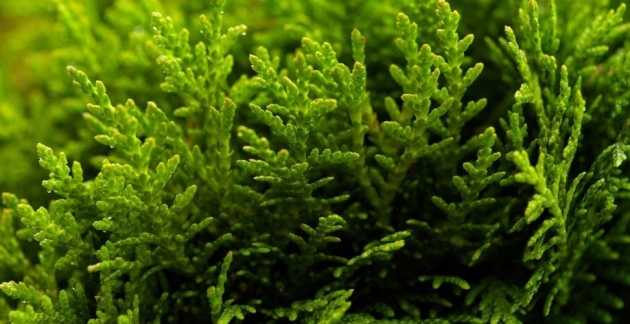

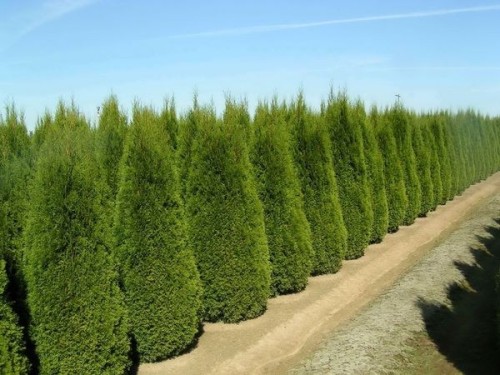

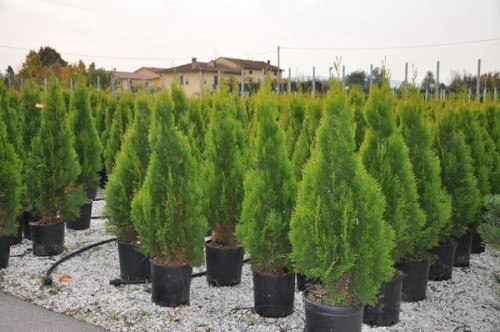
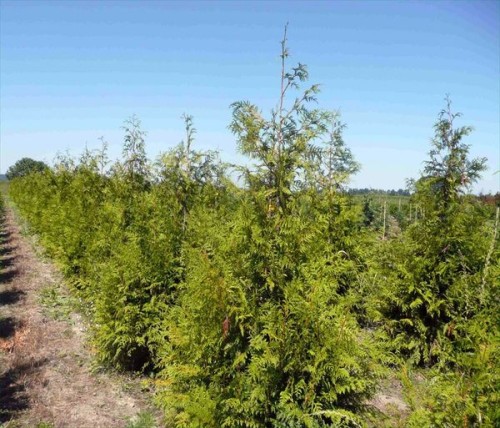
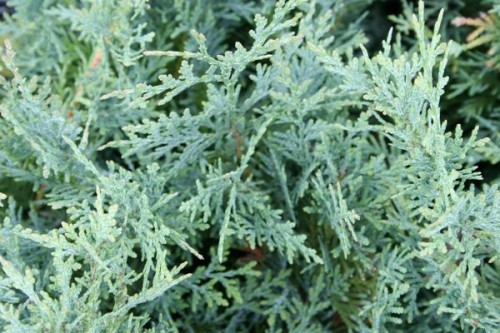
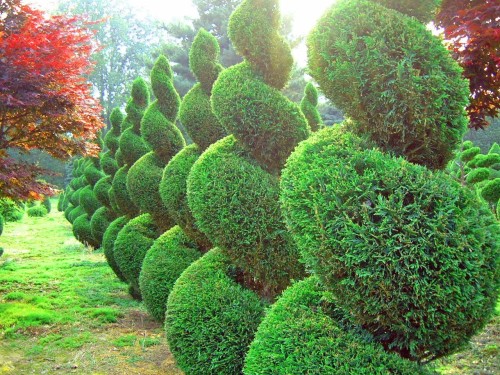
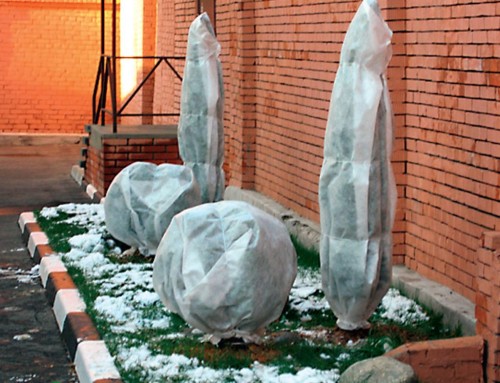

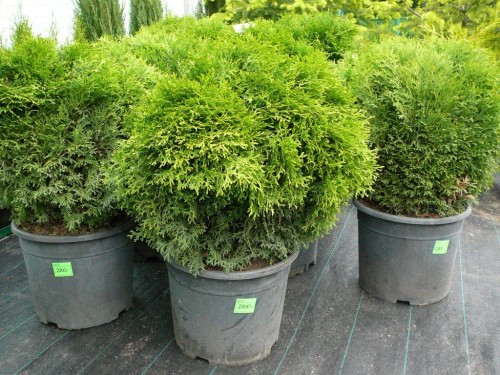












 Start a discussion ...
Start a discussion ...